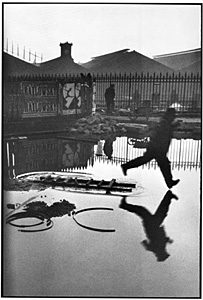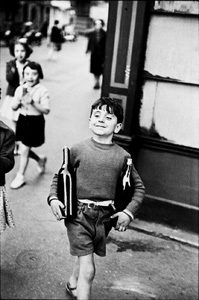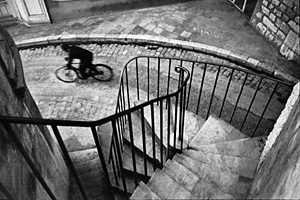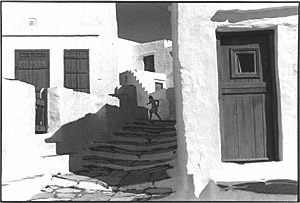
1908 ~ 2004
“For me the camera is a sketch book, an instrument of intuition and spontaneity, the master of the instant which, in visual terms, questions and decides simultaneously. In order to give a meaning to the world, one has to feel oneself involved in what one frames through the viewfinder. This attitude requires concentration, a discipline of mind, sensitivity, and a sense of geometry.” – Henri Cartier-Bresson

Henri Cartier-Bresson was surely the most influential and highly regarded master of photography of the 20th century. The man who coined the term ‘the decisive moment’ spent a lifetime capturing some of the most recognized, iconic images in the modern history of the medium itself.
Born on August 22, 1908, Cartier-Bresson studied painting in the late 1920s and made a serious commitment to photography in the early 1930s. In 1935 he studied film with Paul Strand, and later worked as an assistant to film director Jean Renoir.
In 1937 Cartier-Bresson went to Spain during the Spanish Civil War to make a documentary film on hospitals in the Republic. He was captured by the Germans in 1940 and spent three years in prisoner-of-war camps before escaping. In 1946 he traveled to the United States to complete a ‘posthumous’ exhibition which the Museum of Modern Art in New York had began in the belief that he had disappeared in the war.
Cartier-Bresson co-founded the renowned Magnum photography agency in 1947 and continued to travel the world making his unforgettable images. In 1952 he published Images ã la sauvette (The Decisive Moment), which went on to become one of the most revered and highly sought after photography monographs of all time.


Working with a Leica, a small, quiet 35 mm rangefinder camera whose use has since become almost a Magnum trademark, Cartier-Bresson commonly went unnoticed as he photographed the streets, finding a visual coherence within fragmentary instants that he called “the organic coordination of elements seen by the eye.”
Henri Cartier-Bresson passed away peacefully in Montjustin, France on August 3, 2004. He was buried according to his wishes in his family’s presence.
Now, just as it was fifty years ago, the photographs of Henri Cartier-Bresson are some of the best recognized, most revered and highly sought after in the medium itself. We consider them to be perhaps the best investment in today’s marketplace.

|
||||||||||||||
| Recommended Reading:
Henri Cartier-Bresson: Scrapbook, Thames and Hudson, hardcover published January 2007. Henri Cartier-Bresson: The Man, the Image and the World: A Retrospective, Thames and Hudson, hardcover published April 2003. Henri Cartier-Bresson: Photographer, Bulfinch Press, hardcover published in 1992, recently reprinted. The Mind’s Eye: Writings on Photography and Photographers by Henri Cartier-Bresson, Aperture, hardcover published December 1999. Tête à Tête: Portraits by Henri Cartier-Bresson, Little Brown & Company, hardcover published September 1998. Europeans, Bulfinch Press, hardcover published May 1998. |
||||||||||||||